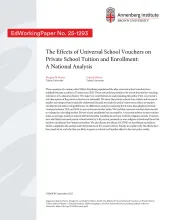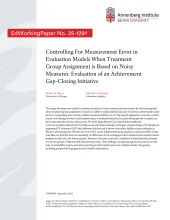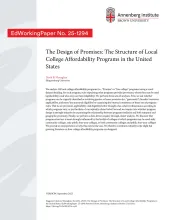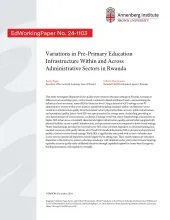The Trusted Source for Emerging Education Research
Researchers and policymakers can both benefit from timely access to research. EdWorkingPapers is a platform for prompt and open dissemination of high-quality studies. By connecting researchers and informing policymakers, the series accelerates progress in education.
Learn more about the platform →
EdWorkingPapers Review Board - Call for Applications
We are pleased to announce that applications are now open for the 2026 EdWorkingPapers Review Board, One-year term (January–December 2026) with an honorarium of $6,000. Applications are due Monday, September 29.





